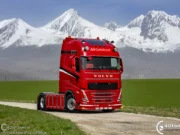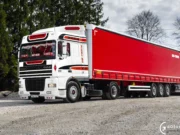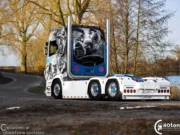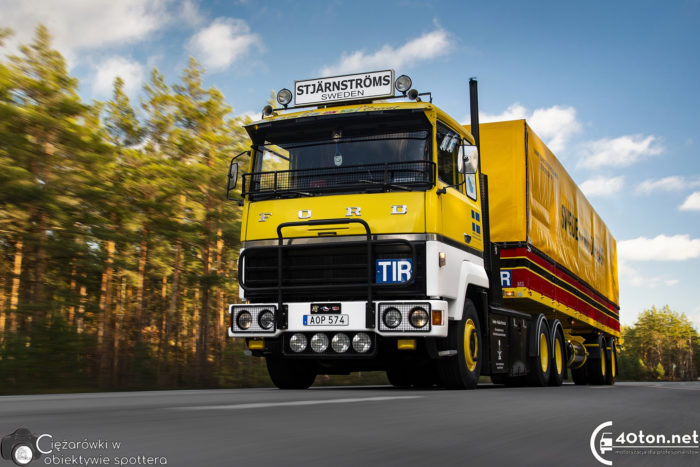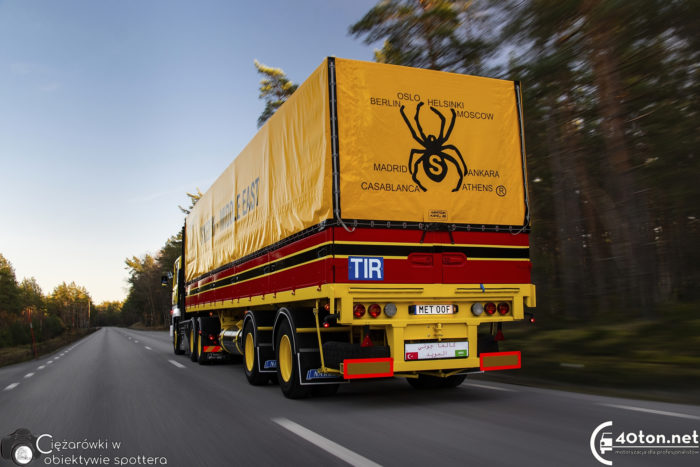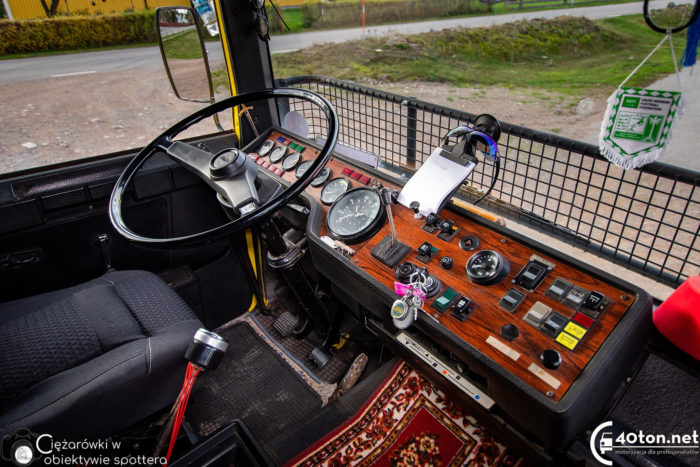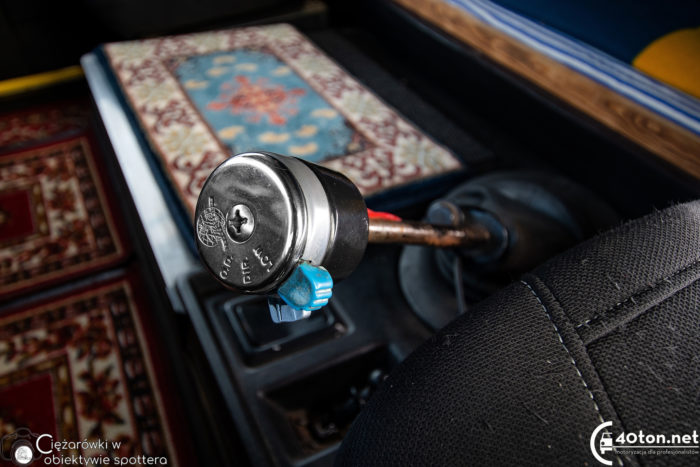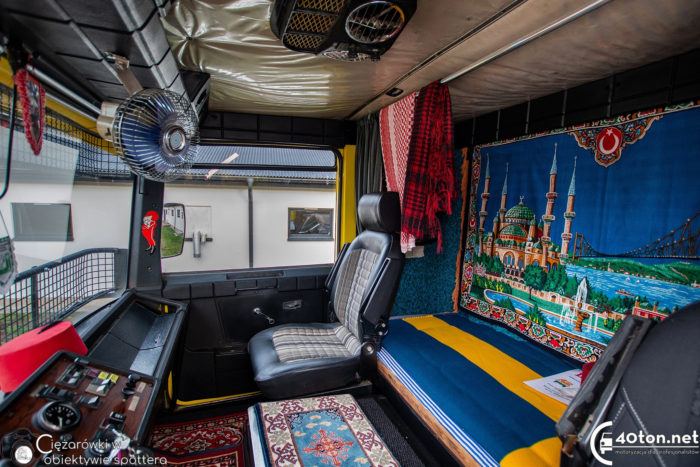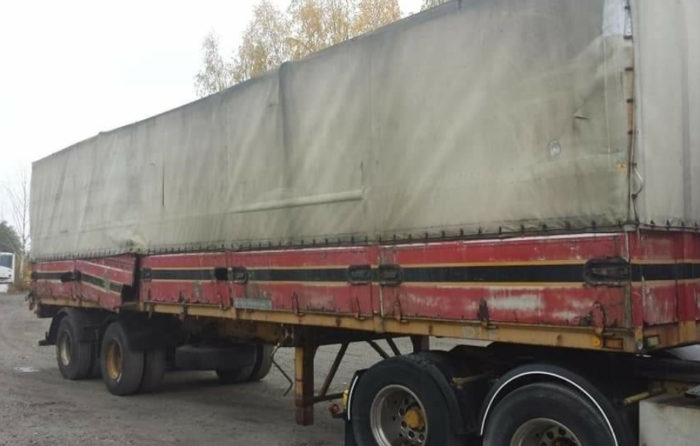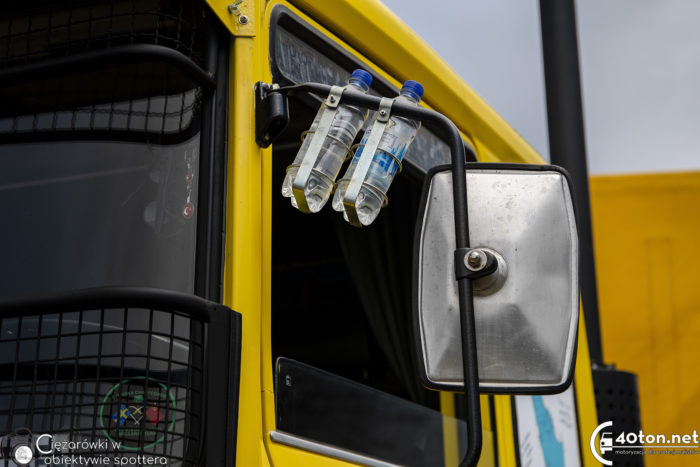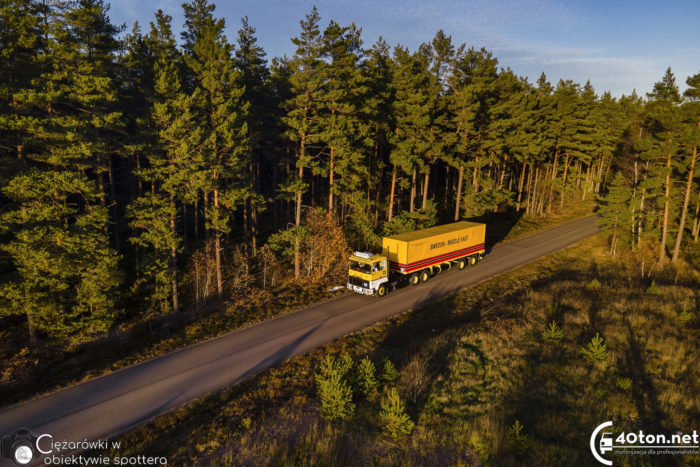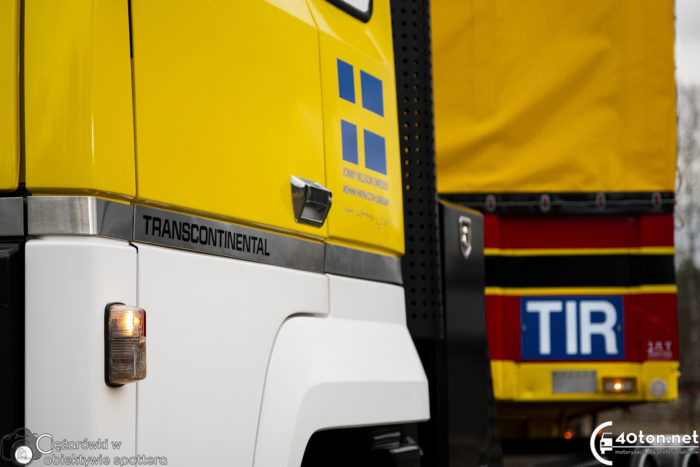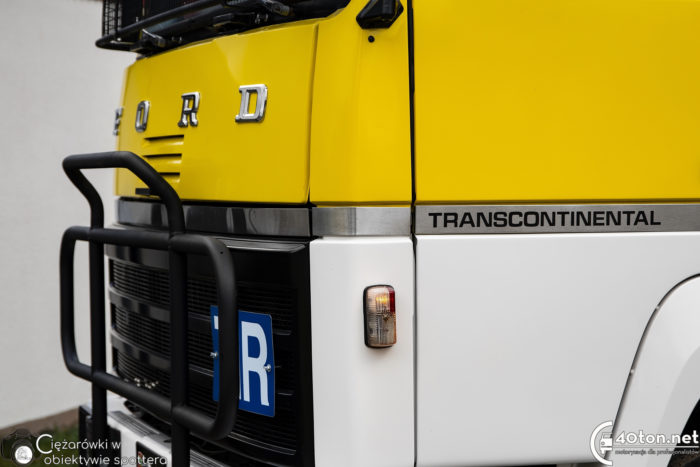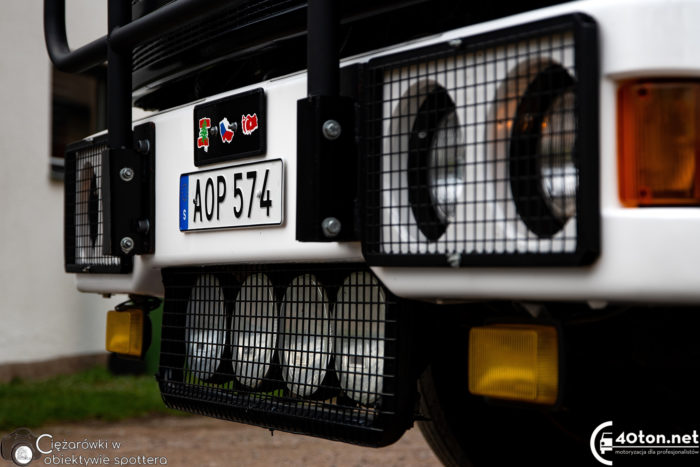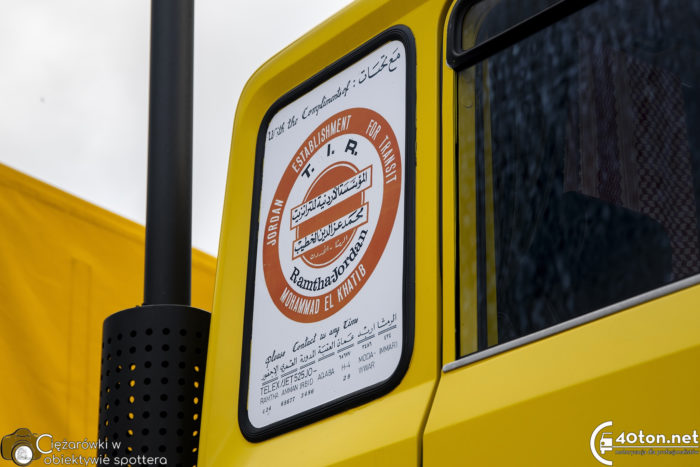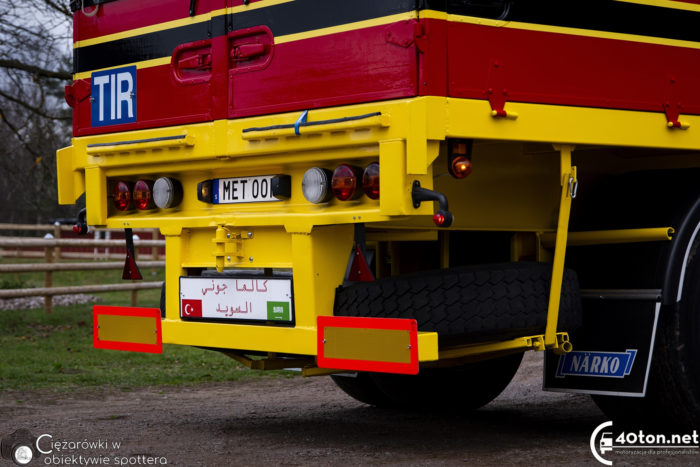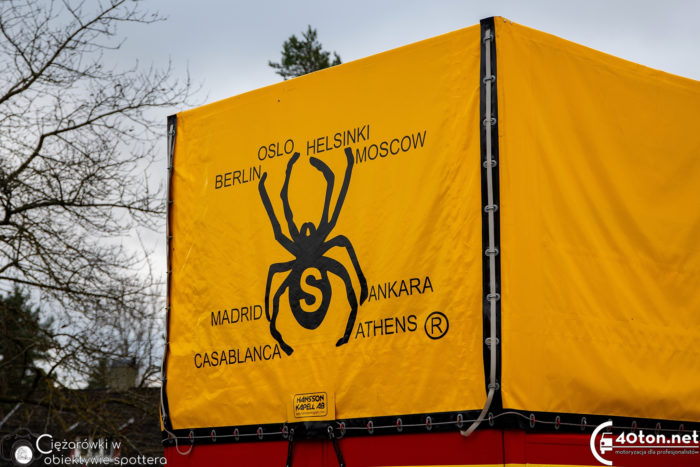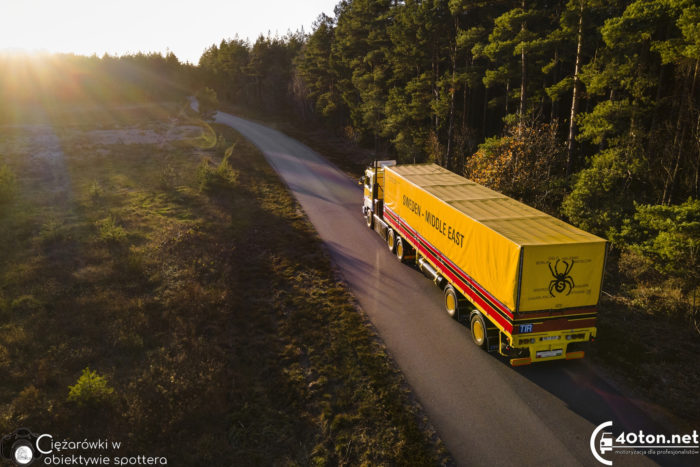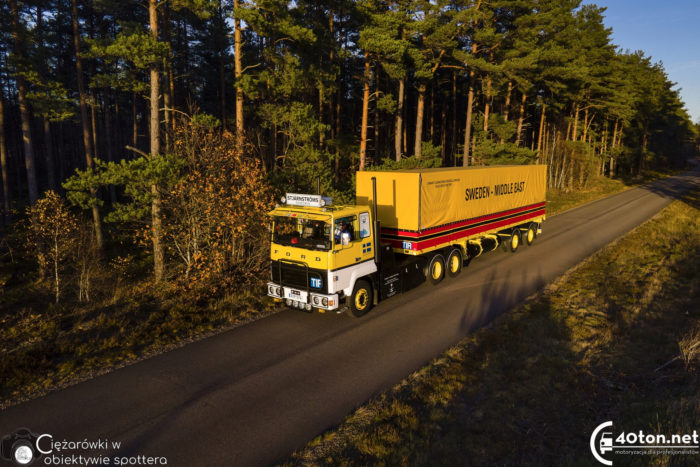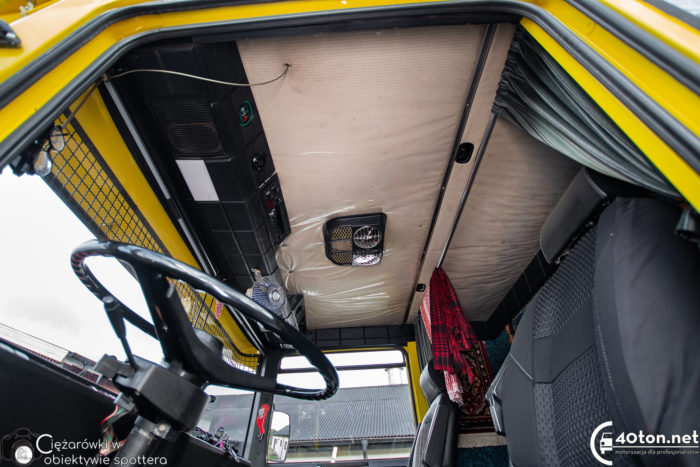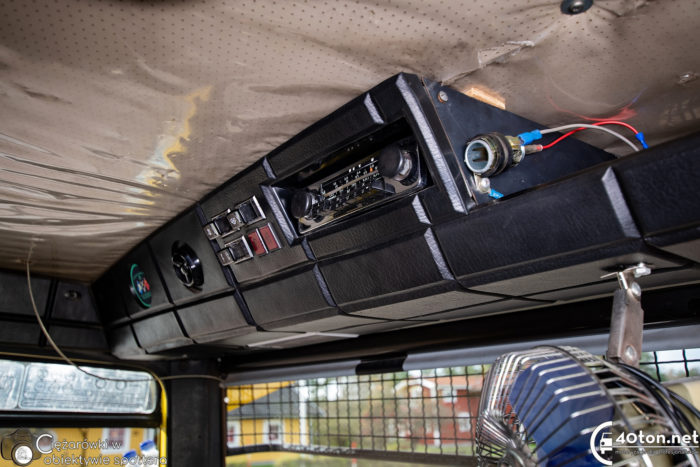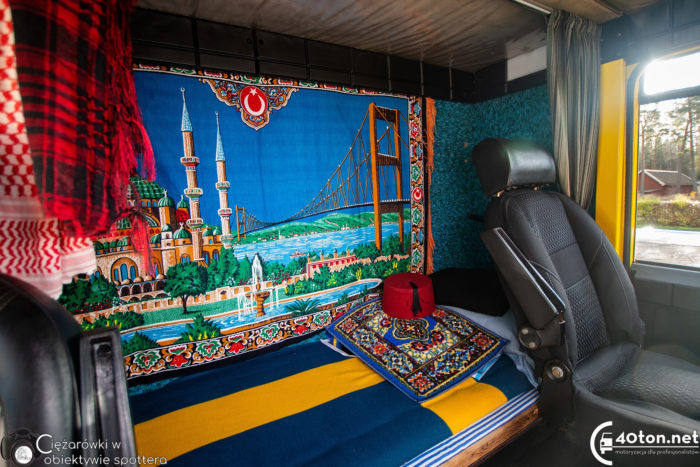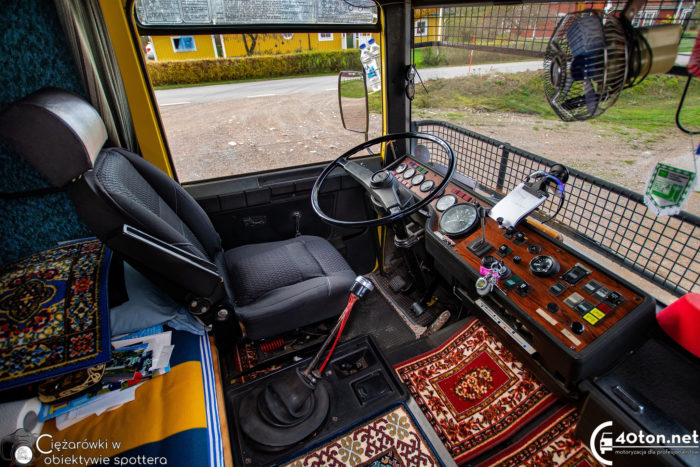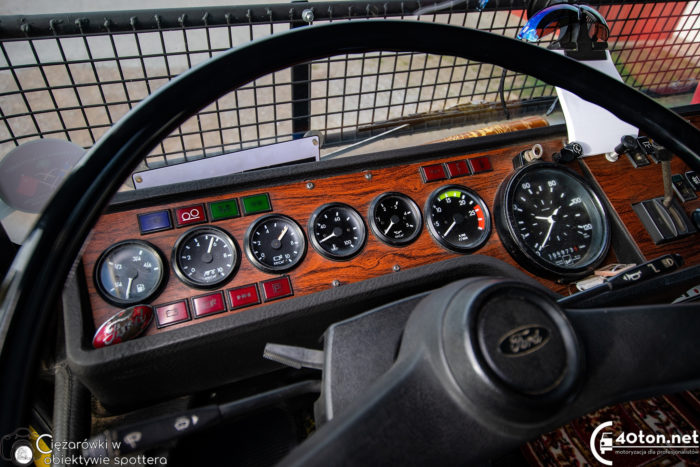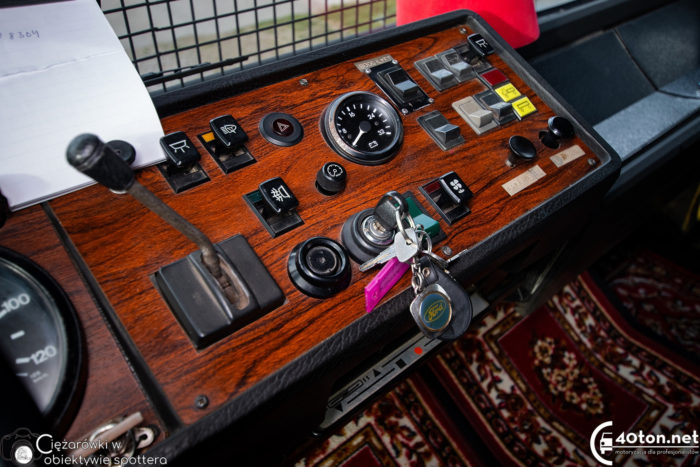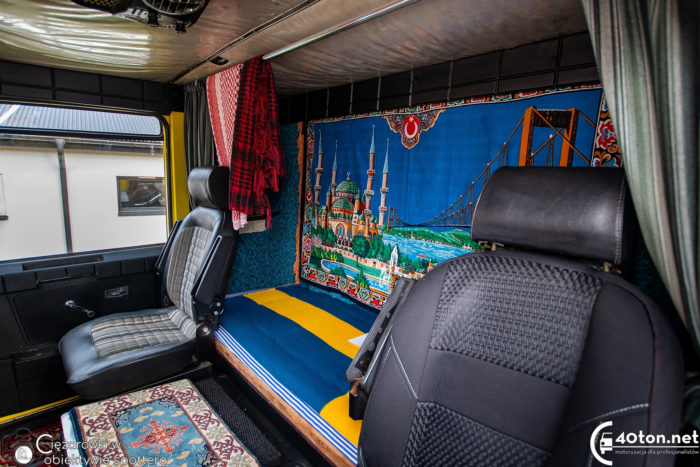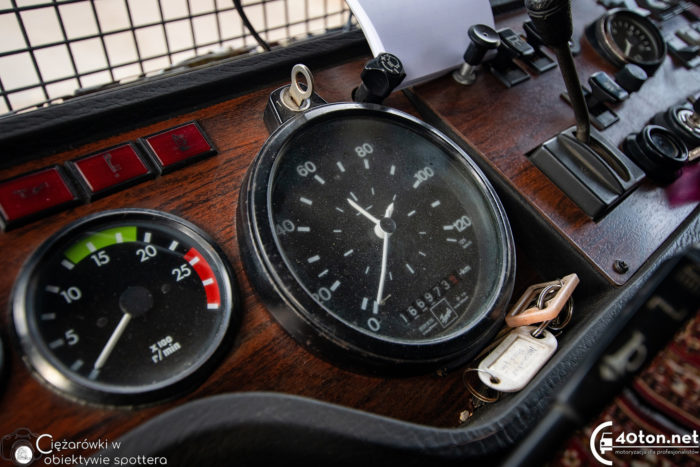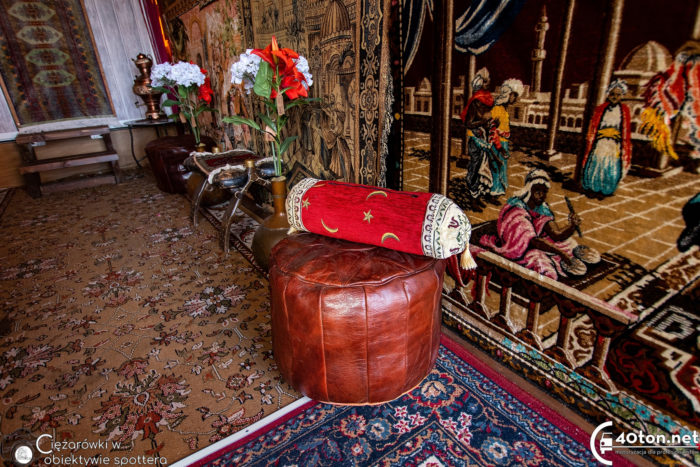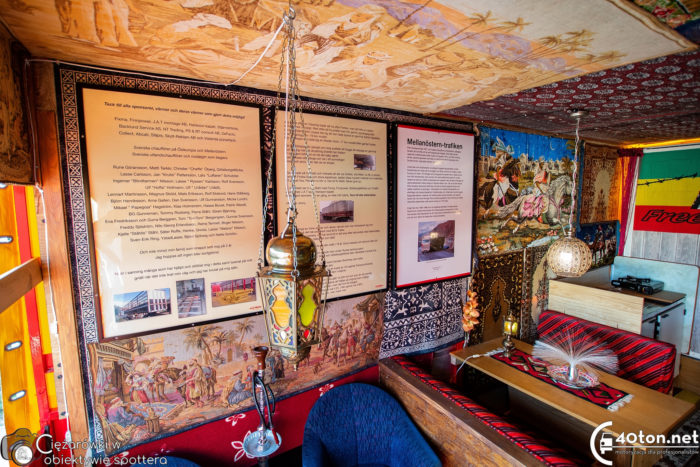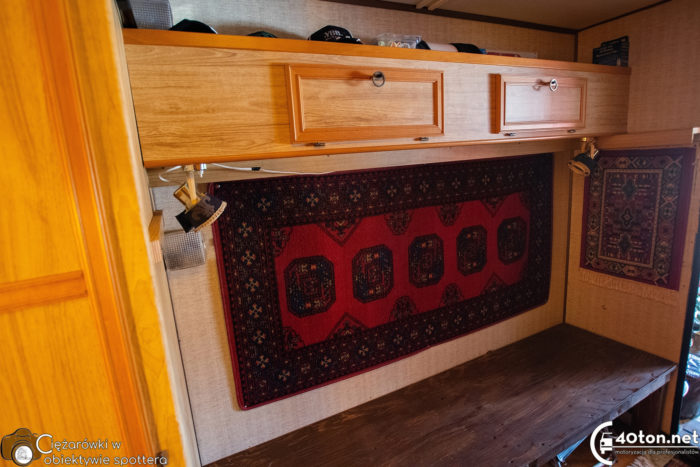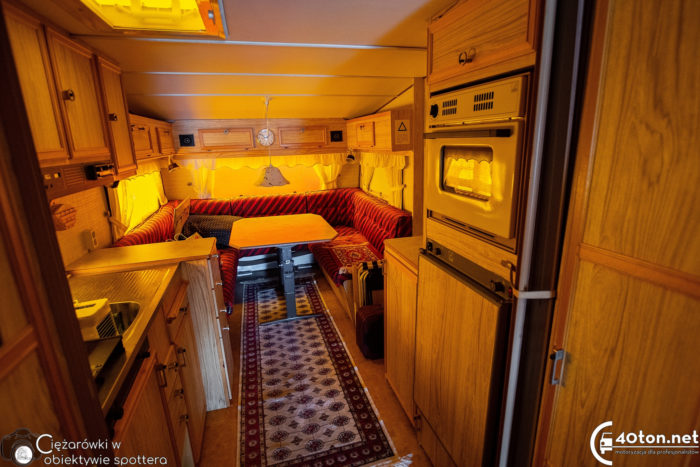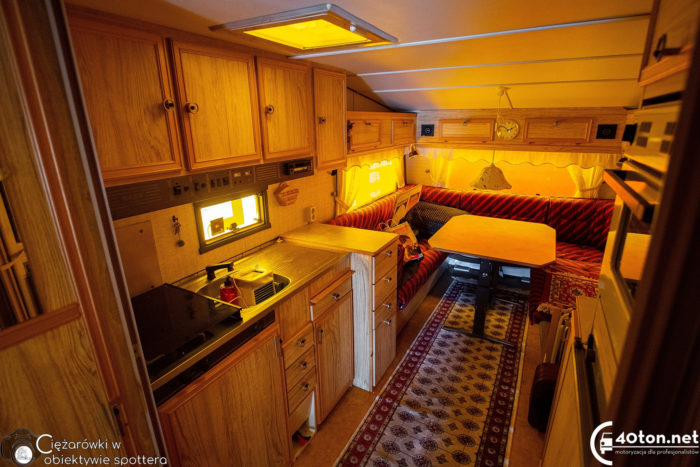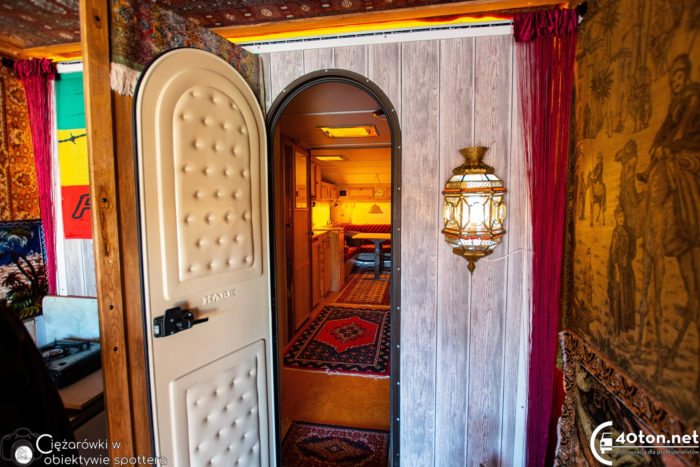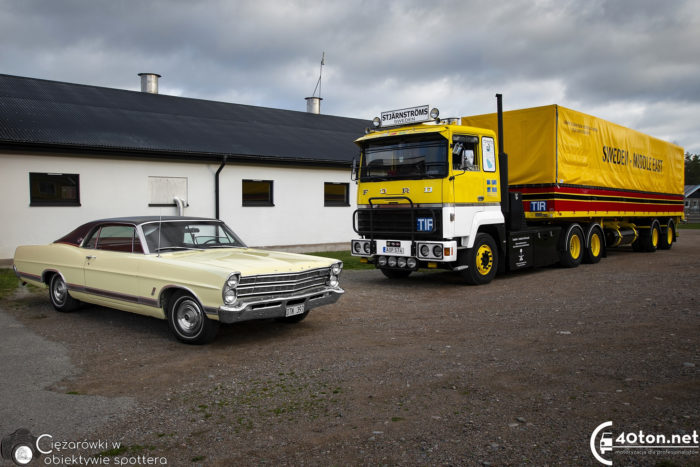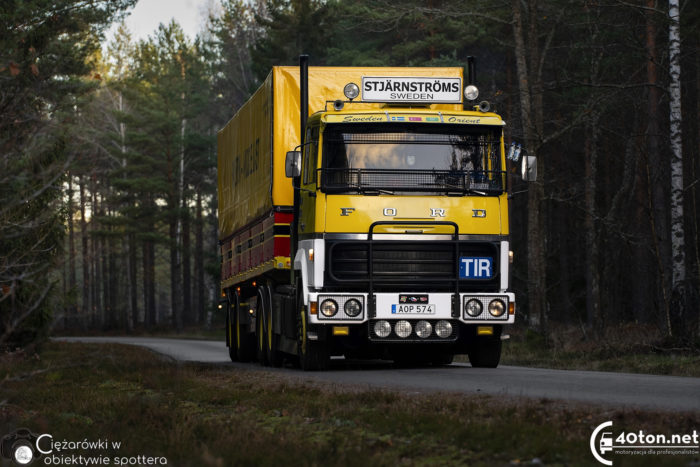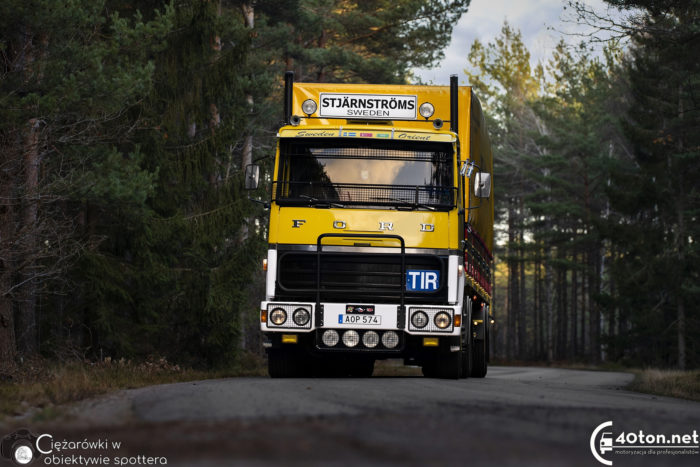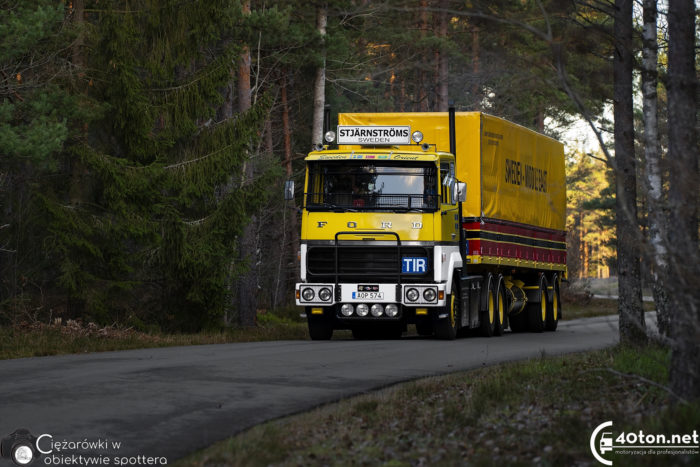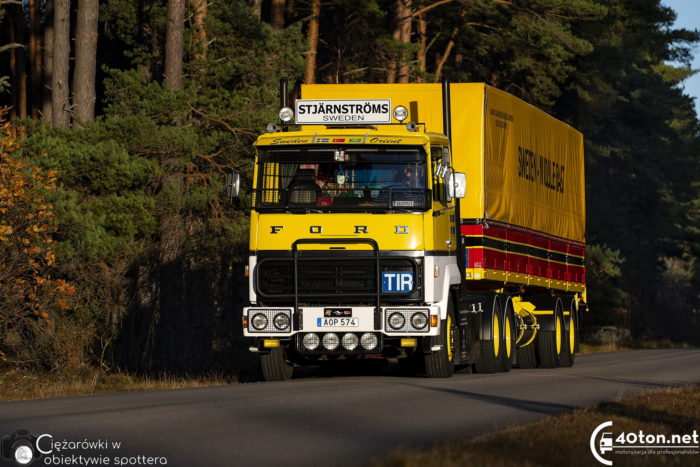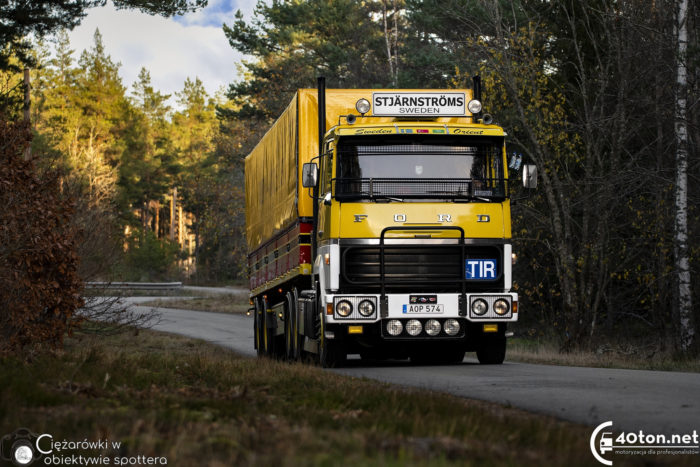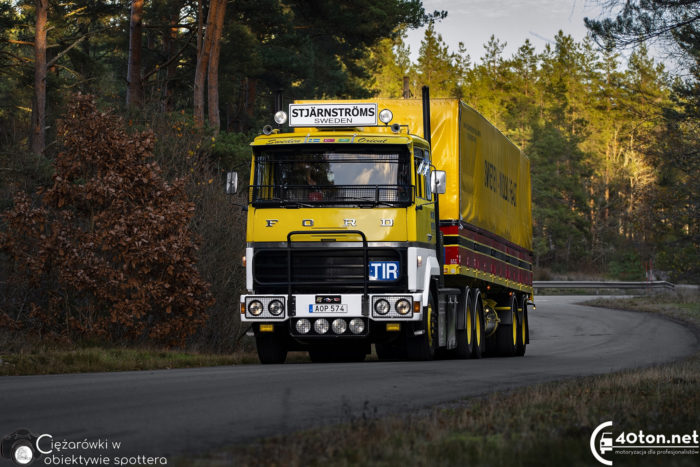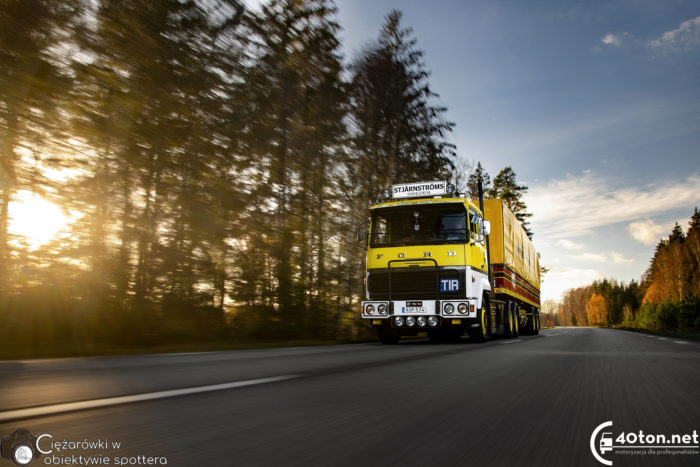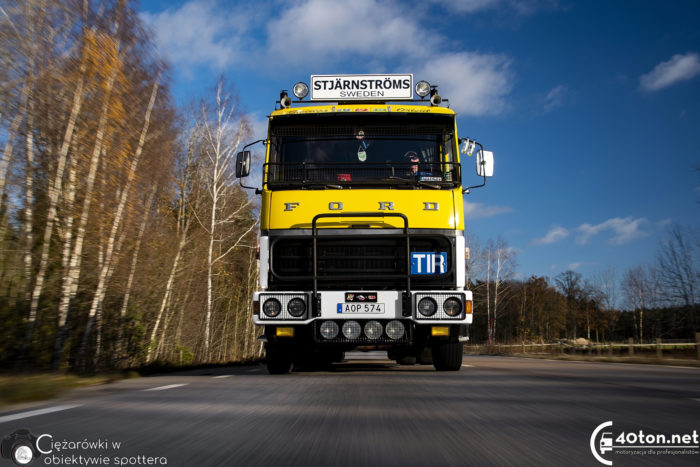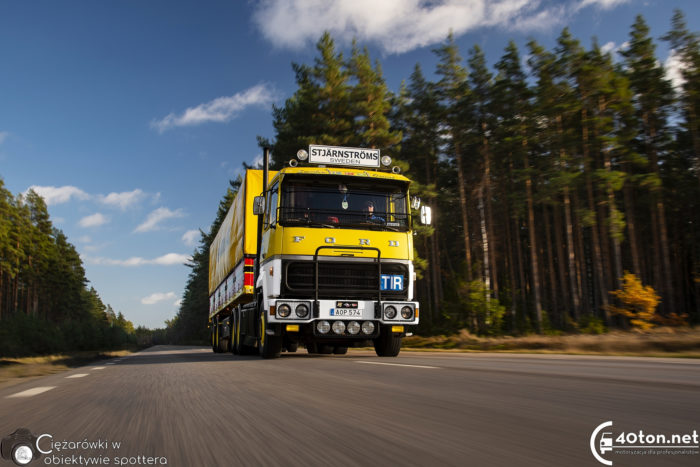Above: movie presentation
Translated by Tomasz Oryński
Polska wersja pod tym linkiem
Welcome in yet another article in the “Photosession of the month” series, prepared in cooperation with a photographer Heniek Anielski (Ciężarówki w obiektywie spottera). Every month, Heniek goes somewhere in Poland to photograph some unique truck and learn its history. This way portraitures of modified or vintage vehicles are made, often enriched with the stories of their proud owners. The whole project started two years ago and all materials so far can be found under this link.
Today’s chapter will be the last in the year 2022 and on that occasion we prepared something special. There will be more pictures than usual, supplemented by the movie, and in order to create all of that Heniek had to travel to Sweden. Because it’s Sweden when we managed to find a truck that is unique in two separate ways: even when brand new it was a very rare sight, and today it became truly a museum on wheels in the real meaning of that word. Our today’s star is a Ford Continental that in every possible detail alludes to the routes connecting Europe with the Middle East.
Let’s get back to the mid seventies for a moment. The Western countries suffered economical downturn caused by the fuel crisis while the Middle Eastern countries – basically for the same reason – started to enrich themselves at the unprecedented scale. Import of goods from Europe was booming and the international situation – amongst other related to the civil war in Lebanon – paralysed marine traffic. Therefore European hauliers and drivers started to undertake intercontinental journeys on the mass scale. Trucks travelled really, really far, not only to Iraq, Iran or Syria, but also to Saudi Arabia, Kuwait or even as far as Pakistan. When it comes to the trucks designed for that job, the one of the most interesting propositions was to be the new truck from Ford, for this very reason named Transcontinental.
Ford Transcontinental went on the market in 1975 and it was quite an unique project. You could call it a peculiar mixture, as it had a cab purchased from a French manufacturer Berliet, drivetrain constructed of American component and it was produced in two European countries. Exactly 8231 pieces left the Amsterdam factory while other 504 lorries begun their live in a British factory in Sandbach. The truck was produced for 9 years, up to 1984. It’s relatively short period, and the production scale was not great, which is pretty telling when it comes to market success. In other words, the truck simply “didn’t caught on”. Nonetheless there were many people who were happy with their Fords and even built a long lasting warm memories in connection with those trucks. And here we come to the story of Jonny Nilsson from a Swedish city Kalmar, who first drove Transcontinental on the longer hauls in his career and a few decades later he decided to return to this model.
Jonny Nilsson’s career in haulage begun in 1968. Initially he was helping in his father’s family company, dealing also with mechanical issues. His first journeys were local and undertaken with classic Scania-Vabis and then mid-heavy British lorry Ford D series. With time young Swede became interested in going international, and inspiration for that came with the journey he undertook with a friend in 1976, during which they went as far as to Bandar Abbas in Iran. After this trip Jonny decided to sell the aforementioned Ford, got a job at another haulage company and began travelling on the routes between Sweden and Austria. Year later he made another step and purchased his own Scania 111 and with that truck continued his travels to Austria, this time as a owner driver, pulling a rented trailer. And when even those journeys felt too short, Scania gave way to slightly used Ford Transcontinental and Jonny entered the world of the really long hauls.
His first trip in this Ford took him to Riyadh in Saudi Arabia. At this time it was one of the most distant destination where it was possible to see a truck on European plates. What formalities that entitled and how restrictive were procedures I already wrote in one of my Polish language articles. Soon after another contracts took Jonny to Kuwait and amongst his less remote destination one can list Turkey, Iran, Iraq, Syria, Lebanon and Jordan. Apart from that there was plenty of work taking him to European countries – both from the West and from the Eastern Bloc. By the way, today it seems very unlikely for a Swedish owner-driver to work on such routes, but back in 1970’s, when nobody heard about opening the haulage market across the European Union, it was nothing unusual.
Why American-Dutch-British Ford became Jonny’s choice for this work? The answer was simple: as he explain, Transcontinental was cheap, strong and had a very good cab for the time. Even basic trucks were fitted with 14 litre 340 HP Cummins engine that was at the time one of the strongest options in European market. In 1979 an improved version had been introduced with the output of 355 horses. On the top of that Ford offered Eaton Fuller non-synchromesh gearbox with 9 or 12 gears (the latter with double splitter and a crawler gear, in American nomenclature called „13 speed”) and the whole drivetrain was finished with a Rockwell drive axle. The gearbox allowed for American-style gear changes without touching the clutch – provided the driver got a good feel of the vehicle – but the whimsical British electric system provided by Lucas turned to be truck’s true Achilles’s heel.
When it comes to the cab, Ford decided to place it higher than the competition, and definitely much higher than in Berliet trucks it originally came from. In effect the engine tunnel was almost eliminated, which resulted in a spaciousness almost unheard of in the 1970s. The company took care of the interior, trimming it in American style with fake wood and elegant chairs, fitted with such rare (at the time) luxuries like head- and armrests. There was also optional Middle East trim, typical for the times, consisting of factory made gas cooker and a sink mounted in a special recess at the dashboard on the passenger side (example of such solution can be seen on those pictures).
This brings us to the end of the historical part of the text that took us over the matters from almost half of a century ago. Since then everything has changed, Ford Transcontinental trucks are nearly extinct and Jonny Nilsson himself celebrated his 72th birthday. How it come then, that we could take pictures of this truck, that looks as it was pulled out of the Midlle-Eastern archives? It is a result of a six-years long project, this time of the pure hobbyist nature. See, Jonny decided to re-created his old truck that he used to travel across the Arabian Peninsula with, and he happened to have an unimaginable luck with it.
The chance to purchase second hand Transcontinental somewhere in Scandinavia were really slim. We have to remember how the local market is dominated by the local manufacturer. Despite that in 2016 Jonny found perfect base for renovation, manufactured in the same year that his original truck (1977) and fitted with the same drivetrain (340 HP Cummins and 12-gear gearbox) while having a truly miniscule mileage of 163 000 km. As it turned out, this vehicle was for the last 21 years parked on a farm in Northern Sweden and before that it was only making a sporadic journey within the country delivering animal feed from the south. Moreover, next year it became possible to obtain the perfect trailer, virtually identical to the one Jonny was hitching his Ford to all those decades ago. It is of course a Finnish Närko trailer from 1978 that itself also had done several journeys to the Middle East.
Pictures taken after the purchase:
The purchase of the truck took about a year. It’s previous owner just did not wanted to part with it, so a lot of convincing was required. And when finally the deal was done, even longer process of restoration took place. After 21 years of being parked in cold climate, even starting the engine or taking care about the rubber element or removing the rust turned out to be an enormous challenge. Just this basic work took two years and required assistance of numerous friends and friends of friends, to whom Jonny remains eternally grateful. The fact that the drivetrain came from America made things a bit easier, as all elements of the engine, gearbox or the differential were readily available. But completing other elements, especially the details of the trim, is extremely difficult in such a rare model. As an effect the work really never ended and to be able to support the project, the 72-years old owner refused to retire and still works five nights in every fortnight.
Nonetheless even now the vehicle regained a lot of its former shine, and it is possible that it looks much better than many brand new examples in the 1970’s. It’s owner obtained several optional additions from the era, that not only improved the truck’s lure but also improved its practicality. The practical add-ons include several elements that used to protect trucks and their drivers during their trips to the middle east, like front bull bars or cages protecting the headlights and the windscreen. On the side mirror an old bottle holders to cool water are mounted, the long wheelbase allowed for some outside storage and additional fuel tank was fitted under the trailer in order to extend range in the remote, sparsely populated areas. The expert’s eye can also notice an air conditioning system that took place of the sunroof and that was really a desirable piece of equipment back then.
Some of those classical elements Jonny kept from his own times as Middle East hauliers, removing them from his first Transcontinental all those years ago. Thanks to this the vehicle has many original elements such as advertisement for Saudi custom agents on the side of the sleeper or middle-eastern motifs inside the cab. It worth to notice also the markings of Stjärnströms International placed both on the tractor’s light board as well as on the rear side of the tilt body of the trailer. This is not a coincidence, as this was a company that for years organized freights between Sweden and Arabian Peninsula or even North Africa. And if for someone this is not enough of memorabilia, it’s enough to take a peek into the trailer, which had been turned into a kind of mobile museum. It contains a collection of smaller items and middle-eastern carpets purchased by Jonny during his journeys in the 70’s and 80’s. There are also information boards explaining the rig history and the characteristics of such transcontinental haulage.
Those perceptive enough will find something else inside. It is a door, hidden behind one of the carpers, leading to the residential part of the trailer transplanted there from a caravan. One can find a fully fitted kitchen, a living room turned into a bedroom, lots of storage and sanitary facilities. This area serves Jonny during his trips – he uses this vehicle to travel to truck shows and other industry gatherings. This might be a good moment to mention that the Ford needs about 40 litres of diesel per hundred kilometres to pull this trailer, therefore so far those were only journeys to local, Scandinavian events. Nonetheless our hero has already some plans for a trip of his dreams.
Maybe it would be best to let Jonny Nilsson speak in this last part of the article: My dream is to finish my work on truck and trailer, drive the old route from Sweden trough Poland, Cssr, Hungary, Romania, Bulgaria, Turkey to Istanbul. In this amazing city where I have been so many times will I stop for a while and spend some time. After that I will drive via Greece, Macedonia and old Yugoslavia to Italy via Trieste. In Italy I want stay for a long time, drive around visiting old friends and se beautiful places and feel Italy again. I drove Sweden – Italy for about 17 year and it is a very nice place. When I go back to Sweden it will be via Brenner to Austria and Germany to enter old DDR in Hirschberg and from there to Pomellen and Świnoujście to take ferry home. That is my dream. I dont know if it will happen, but you must dream before your dreams come through. In Italy they say, Malgrado tutto continueremo a sognare, perche chi non sogna non spera. E chi non spera non vive. (Despite everything we will continue to dream, because those who don’t dream don’t hope. And who ever does not hope does not live.) We old drivers always say that we have one more trip to go, the last one, that one you not come back from. I realy hope that I get time for my dream trip first. I work on it.
Complete photo session:



